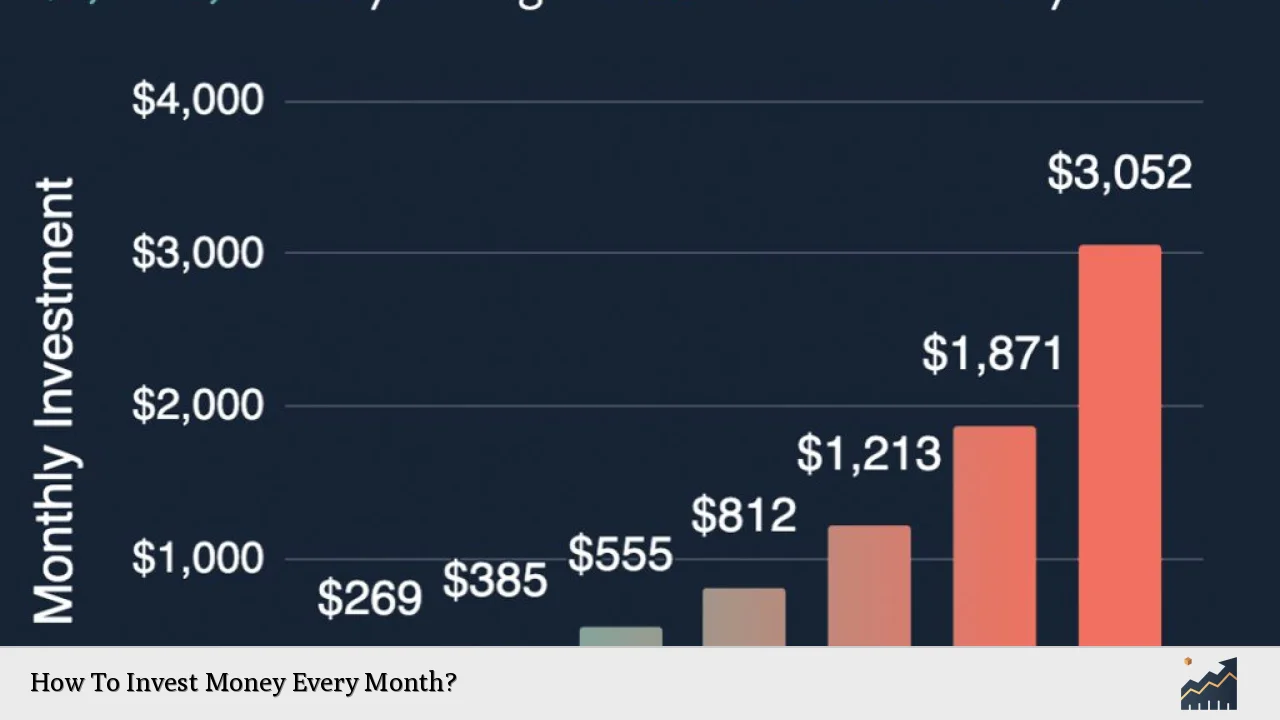Investing money every month is a powerful strategy for building wealth over time. By committing to regular investments, you can take advantage of market fluctuations and benefit from the power of compounding returns. This approach allows you to invest smaller amounts consistently rather than waiting to accumulate a large sum before investing. Whether you are a beginner or an experienced investor, establishing a monthly investment plan can help you achieve your financial goals.
The first step in this process is to determine how much money you can comfortably invest each month. This amount should be based on your financial situation and goals. Regularly contributing to your investments helps mitigate the risk associated with market volatility, as it allows you to buy more shares when prices are low and fewer when prices are high. This strategy is known as dollar-cost averaging.
In this article, we will explore various methods to invest money every month, the benefits of consistent investing, and practical steps to get started.
| Key Concept | Description |
|---|---|
| Dollar-Cost Averaging | Investing a fixed amount regularly regardless of market conditions. |
| Compounding | Reinvesting earnings to generate additional earnings over time. |
Understanding Your Investment Goals
Before diving into monthly investments, it’s crucial to clarify your investment goals. Are you saving for retirement, a home purchase, or perhaps your child’s education? Understanding your objectives will help tailor your investment strategy accordingly.
Your goals will influence the type of investments you choose and the level of risk you are willing to take. For instance, if you’re investing for retirement that is decades away, you might opt for higher-risk investments like stocks. Conversely, if your goal is short-term, such as saving for a down payment on a house within five years, safer options like bonds or high-yield savings accounts may be more appropriate.
Additionally, consider the following factors when defining your investment goals:
- Time Horizon: The length of time you plan to invest before needing access to your funds.
- Risk Tolerance: Your comfort level with potential losses in pursuit of higher returns.
- Financial Situation: Your current income, expenses, and savings that will affect how much you can invest monthly.
By clearly defining these aspects, you can create a more effective investment strategy that aligns with your financial aspirations.
Choosing the Right Investment Vehicles
Once you’ve established your investment goals, the next step is selecting the right investment vehicles. There are several options available for monthly investments:
- Stocks: Investing in individual companies can yield high returns but comes with higher risk.
- Index Funds: These funds track specific market indices and provide diversification at a lower cost than actively managed funds.
- Exchange-Traded Funds (ETFs): Similar to index funds but traded on stock exchanges like individual stocks.
- Mutual Funds: Pooled funds managed by professionals that allow investors to buy into a diversified portfolio.
- Bonds: Fixed-income securities that provide regular interest payments and are generally considered safer than stocks.
- Real Estate Investment Trusts (REITs): Companies that own or finance income-producing real estate, offering dividends without direct property ownership.
Each option has its advantages and disadvantages, so it’s essential to choose based on your risk tolerance and investment horizon.
Setting Up a Monthly Investment Plan
To effectively invest money every month, follow these steps:
1. Determine Your Monthly Contribution: Decide how much money you can allocate each month without compromising your financial stability.
2. Open an Investment Account: Choose an account type that suits your needs—this could be a brokerage account for stocks or ETFs or an IRA for retirement savings.
3. Select Your Investments: Based on your goals and risk tolerance, choose the specific stocks, funds, or other assets you want to invest in.
4. Automate Your Investments: Set up automatic transfers from your bank account to your investment account each month. This ensures consistency and helps avoid the temptation to skip contributions.
5. Monitor Your Portfolio: Regularly review your investments to ensure they align with your goals. Adjustments may be necessary as market conditions change or as you approach your financial targets.
By following these steps, you can create a structured approach to investing that fosters discipline and maximizes potential returns over time.
Benefits of Monthly Investing
Investing money every month offers several benefits:
- Discipline: Committing to regular investments instills a sense of discipline in managing finances.
- Reduced Impact of Market Volatility: By spreading out purchases over time through dollar-cost averaging, investors can minimize the impact of market fluctuations on their overall portfolio.
- Compounding Growth: Regular contributions allow earnings to compound over time, significantly increasing potential returns.
- Accessibility: Many platforms now allow investors to start with low minimum amounts, making it easier for anyone to begin investing regardless of their financial situation.
These advantages make monthly investing an appealing strategy for both novice and seasoned investors seeking long-term growth.
Common Investment Strategies
When it comes to investing money every month, several strategies can enhance potential returns:
Buy-and-Hold Strategy
This classic strategy involves purchasing investments and holding them for an extended period regardless of market fluctuations. The goal is to benefit from long-term growth rather than attempting to time the market.
Dollar-Cost Averaging
As mentioned earlier, this strategy entails investing a fixed amount regularly. This approach reduces the risk of making poor investment decisions based on short-term market movements.
Value Investing
Value investors seek undervalued stocks with strong fundamentals. By identifying companies trading below their intrinsic value, they aim for substantial returns when the market corrects itself.
Growth Investing
Growth investors focus on companies expected to grow at an above-average rate compared to their industry peers. This strategy often involves higher risks but can yield significant rewards if successful.
Income Investing
This strategy prioritizes generating regular income through dividends or interest payments rather than focusing solely on capital appreciation. It’s suitable for those seeking passive income streams from their investments.
Choosing the right strategy depends on individual goals and risk tolerance; understanding these approaches will help inform better investment decisions.
FAQs About How To Invest Money Every Month
- What is dollar-cost averaging?
Dollar-cost averaging is investing a fixed amount regularly regardless of market conditions. - How much should I invest monthly?
Your monthly investment should be based on what you can afford without compromising other financial obligations. - What types of accounts can I use for monthly investing?
You can use brokerage accounts, IRAs, or even employer-sponsored retirement accounts for monthly investments. - Is it better to invest in stocks or bonds?
This depends on your risk tolerance; stocks generally offer higher returns but come with more volatility compared to bonds. - Can I start investing with little money?
Yes! Many platforms allow you to start investing with low minimum amounts through fractional shares or ETFs.
Investing money every month is not only feasible but also beneficial for building wealth over time. By setting clear goals, choosing suitable investment vehicles, and adhering to a disciplined approach, anyone can grow their financial portfolio effectively. Start small if necessary; the key is consistency and patience in achieving long-term financial success.

